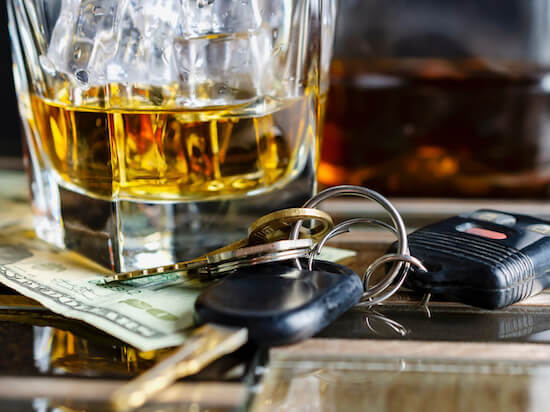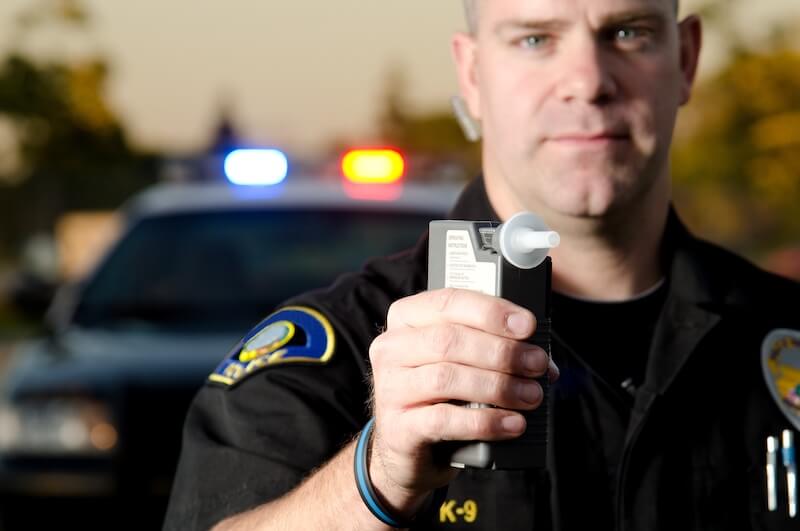Driving under the influence, more commonly known as DUI, is the violation of driving while impaired by alcohol or drugs (recreational like marijuana or prescribed by a doctor) to a level that you can’t drive the vehicle safely. In the U.S., that level or threshold is when your blood alcohol content–BAC for short–is 0.08% or higher. Except for Utah, which has BAC set at 0.05%. A driver with a BAC higher than 0.08% is legally impaired and will face fines and penalties if pulled over.
Use eTags© to Quickly Complete Your DMV Service. Renewals, Title Transfers and More, All Online!
The legal level of intoxication is four drinks for a 180-lbs. man, and two drinks for a 120-lbs. woman

DUI, DWI, OUI, and more terms for driving impaired
Drunk driving and drugged driving are probably the most popular terms for driving under the influence. But depending on the state you live in, as well as jurisdiction, a DUI can have different terminology. Driving while impaired or driving while intoxicated also go by DWI. Some states use the term OUI for operating under the influence, as well as OVI for operating a vehicle under the influence.
DUI and DWI are based on a police officer’s first-hand observation, but another statutory drunk driving offense is called “illegal per se,” which means the driver’s BAC was over .08% when they were pulled over. In other words, no further evidence of intoxication or impairment needs to be demonstrated for purposes of a DUI case.
Every 52 minutes, one person dies in a drunk-driving crash in the U.S.
There are even more words to describe driving while intoxicated when you look out other countries like Ireland and Australia which call it drink-driving. Canada mostly uses impaired driving. Countries like Kenya and Gambia have no legal limit on drinking alcohol before driving at all. Bolivia and Guatemala don’t have drunk driving laws either.

How drinking affects your driving
The National Highway Traffic Safety Administration says there are about 28 people in the U.S. who die in drunk-driving accidents. That’s over 10,000 people a year! In fact, the Insurance Information Institute reports 36,096 drunk driving fatalities in 2019. Alcohol-related traffic fatalities account for almost 30% of all traffic fatalities annually. Why? Alcohol diminishes your ability to think clearly, impairs your reasoning, and affects muscle coordination.
When driving under the influence, you may be less alert, have slower reaction time, have difficulty steering the wheel, not see the road ahead as clearly, forget to use your turn signals to notify other motorists, and more effects. Covid-19 has also had an impact on statistics surrounding driving under the influence. By September 2020, drunk driving fatalities went up almost 5% from the same period in 2019, although total miles traveled decreased about 14.5%.
How drugs affect you when you’re behind the wheel
Many states have legalized marijuana for recreational use including California, Colorado, and Connecticut. The growing legalization of pot has also increased marijuana-related car accidents. The Insurance Information Institute says drug use is involved in 16% of car crashes. Marijuana can slow reaction time, impair judgment of time and distance, and increase lane weaving when behind the wheel. Cocaine or methamphetamine can lead drivers to be more aggressive and reckless on the road. Benzodiazepines like Xanax, Valium or Ativan and opioids like OxyContin and Vicodin can cause drowsiness, dizziness, and impair the way you think.
Men are involved in 4 times the amount of drunk driving accidents as women, and 80% of fatalities

Zero-tolerance under 21 years old
According to the National Institute for Drug Abuse says “marijuana affects psychomotor skills and cognitive functions critical to driving including vigilance, drowsiness, time and distance perception, reaction time, divided attention, lane tracking, coordination, and balance.” Since driving under the influence is so dangerous and responsible for countless car accidents and fatalities every year, all 50 states have passed zero-tolerance laws that penalize underage drinkers (under 21) for operating a motor vehicle with BAC levels as low as .01% or .02%
Fines, jail time, community service, and more
When it comes to DUI fines and penalties, there are a few factors to consider such as is it a first offense or do you have a prior alcohol-related offense? What state were you driving in? Age? Were you involved in a car accident? For example, if you get a DUI in California, you can get anywhere from 4 days to 6 months of jail time and pay fines and fees between $1,400-$2,600 for your first offense. Florida requires 6 to 9 months of jail time, and up to $2,000 in fines.

For a second offense in Florida, it’s up to a year for jail time. The common penalties for DUI or DWI include some or all of these: jail time, community service, fees and fines, driver’s license suspension, and installing and ignition interlock device. The penalties and fines get more severe if you’re BAC is .15% or more (also called aggravated DUI) or if you were in a car crash where someone is injured.
Texas, California, and Florida have the highest amount of annual alcohol-related fatalities, while Rhode Island, Vermont, and North Dakota have the least
#Dontdrinkanddrive!
